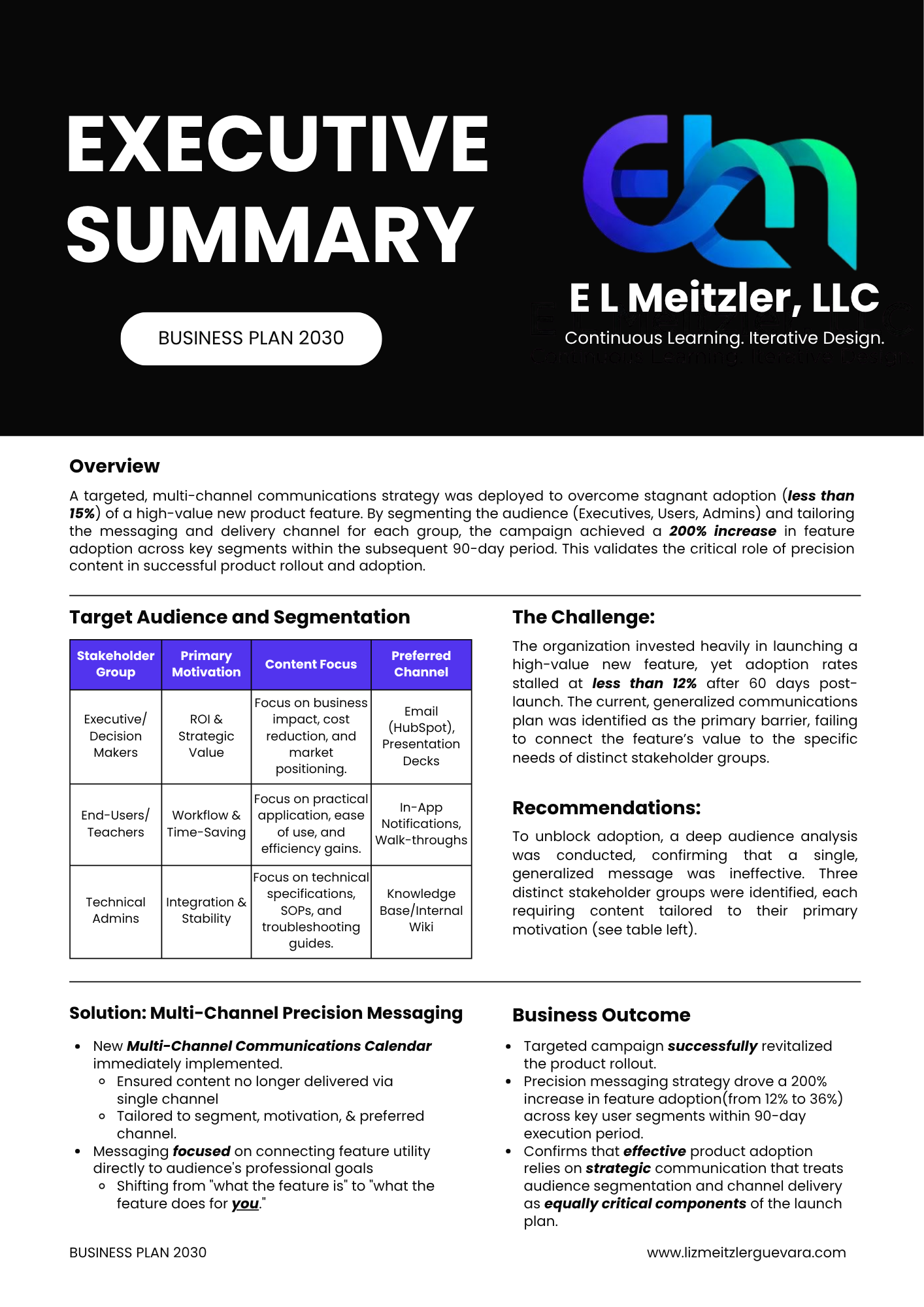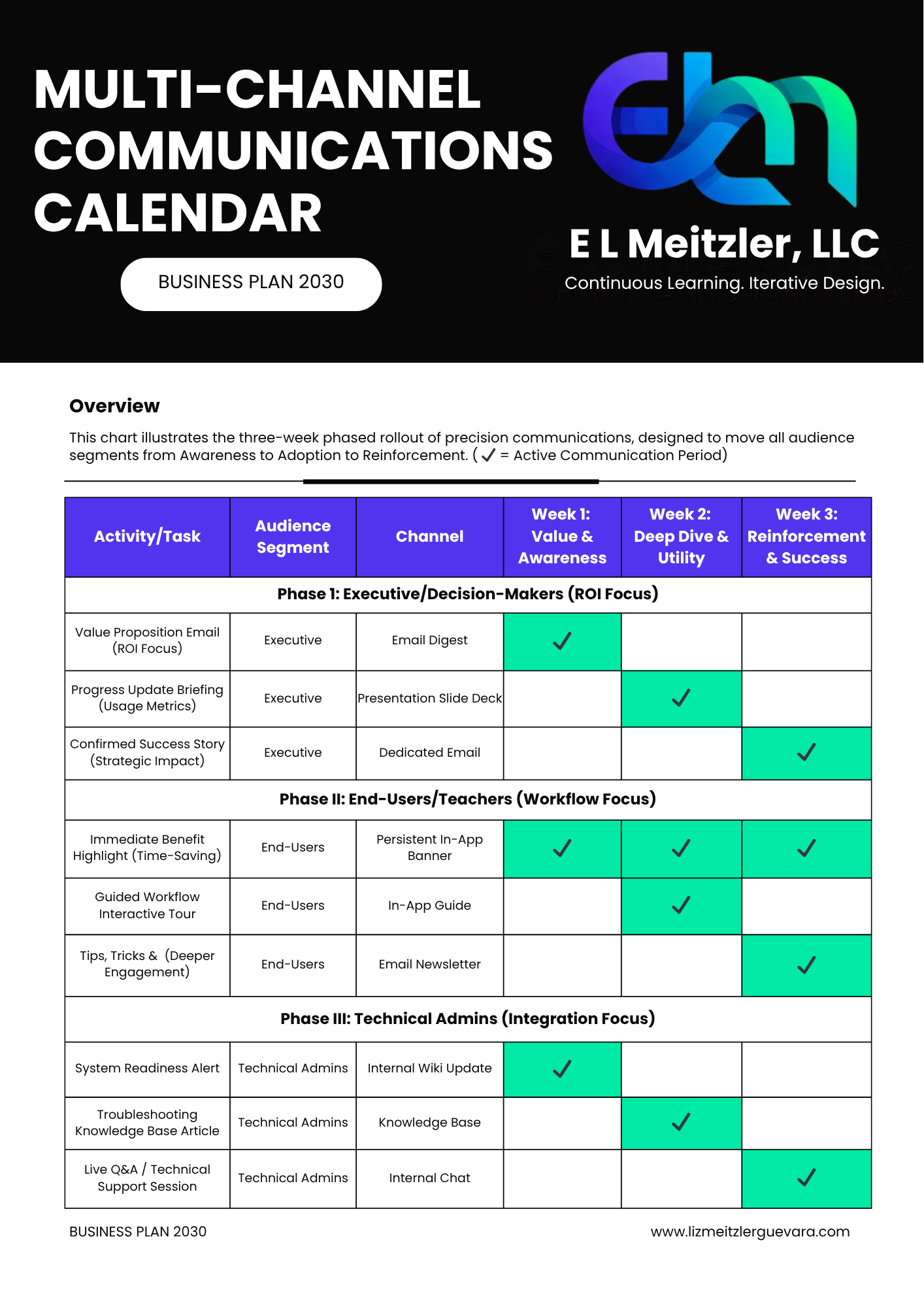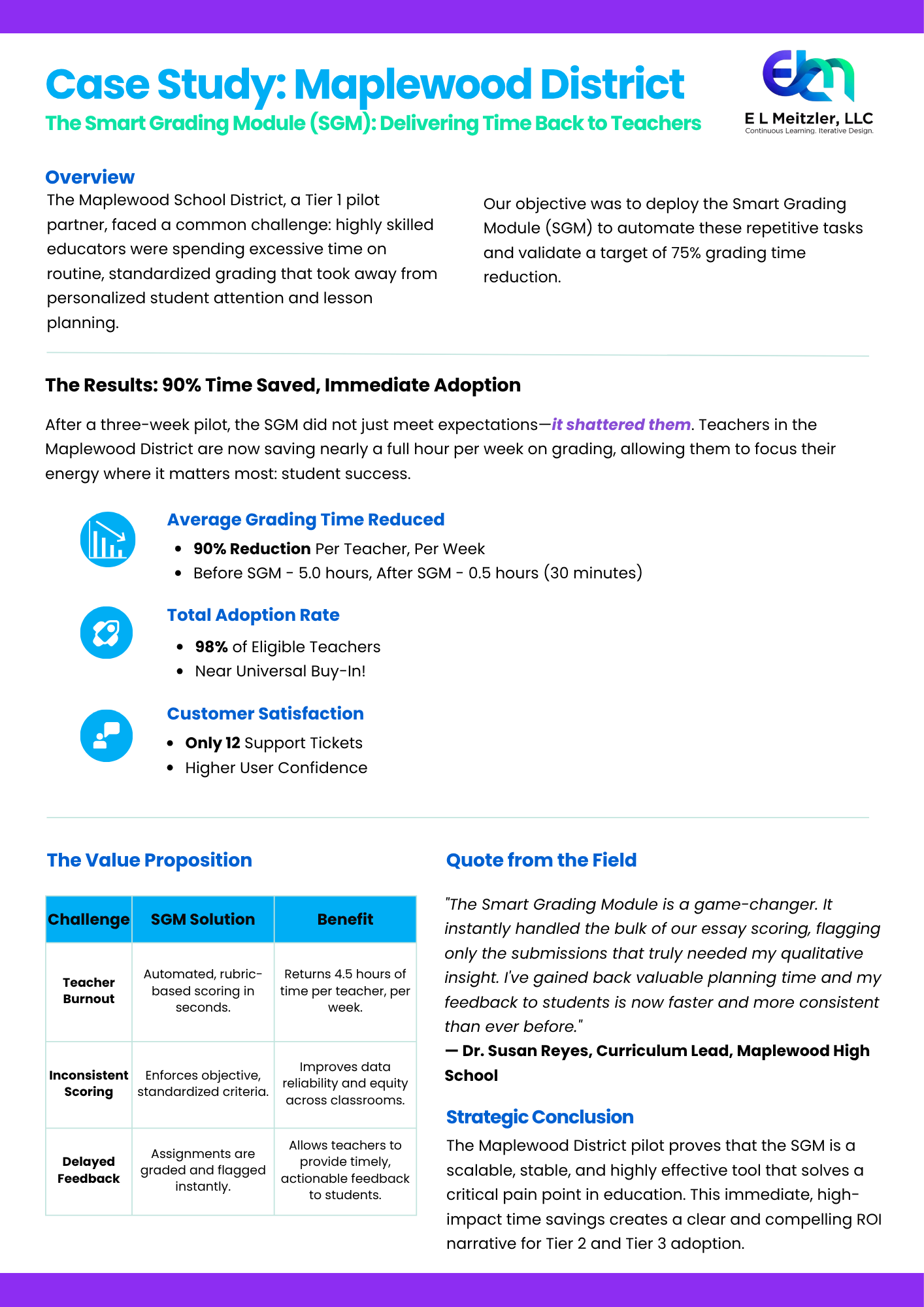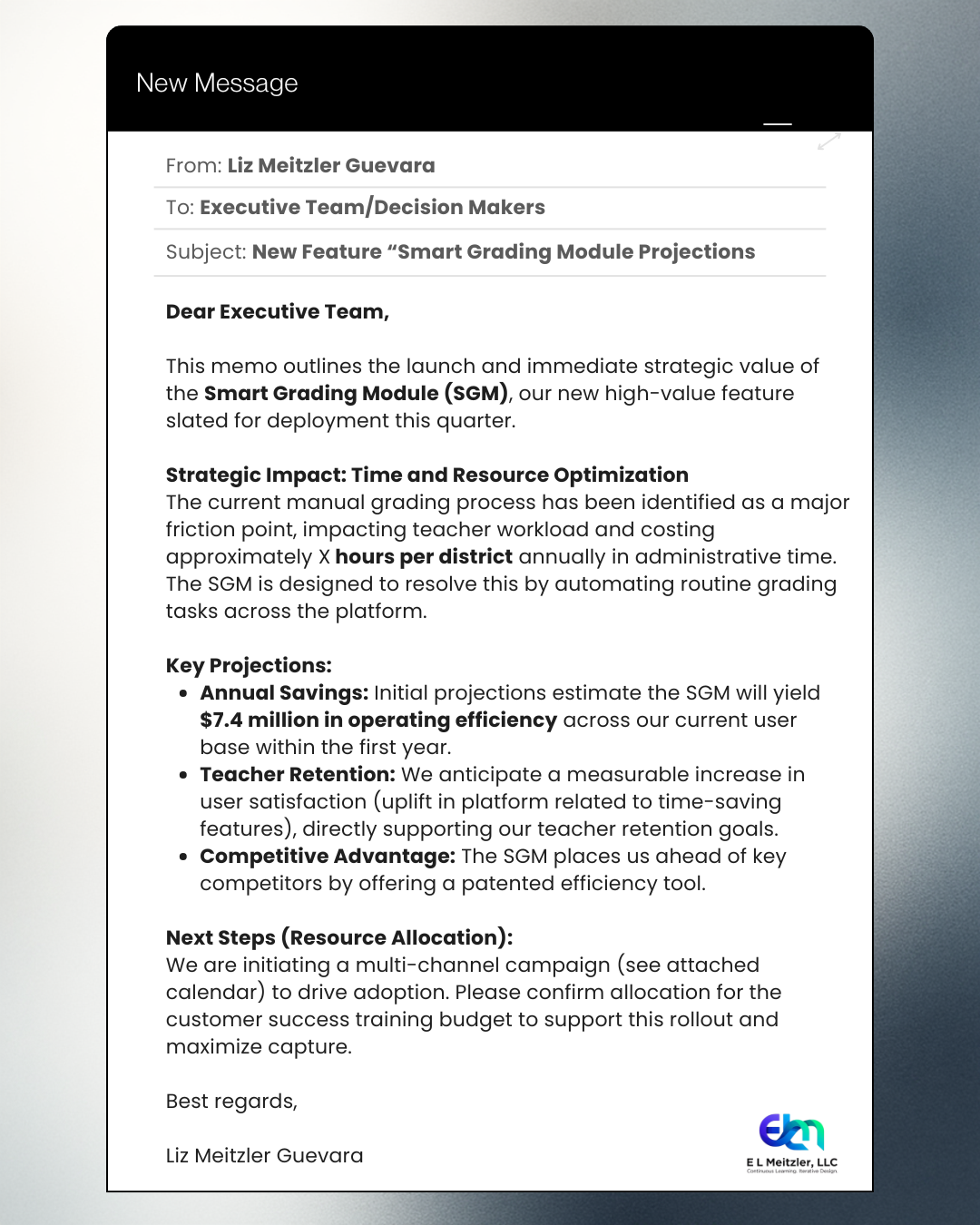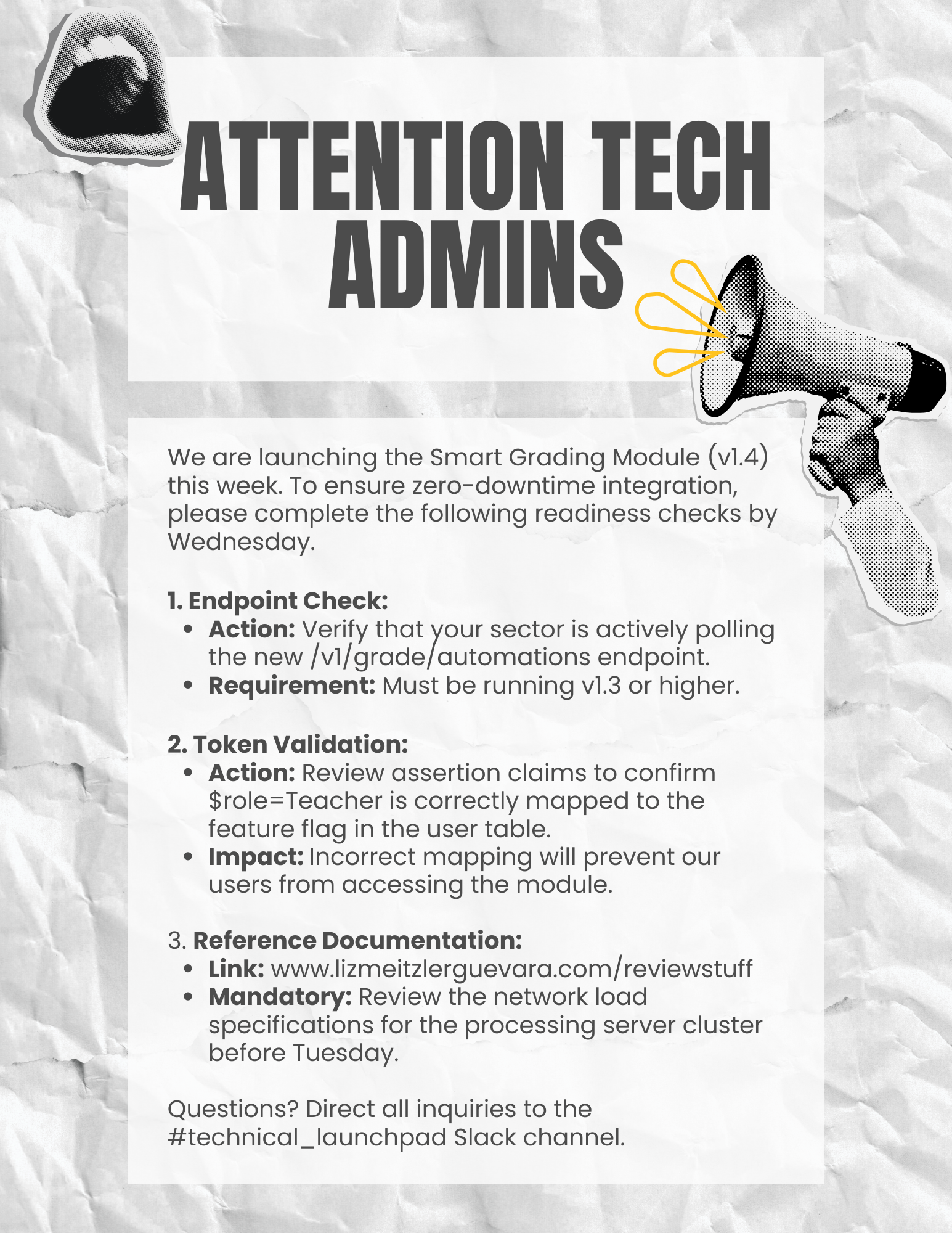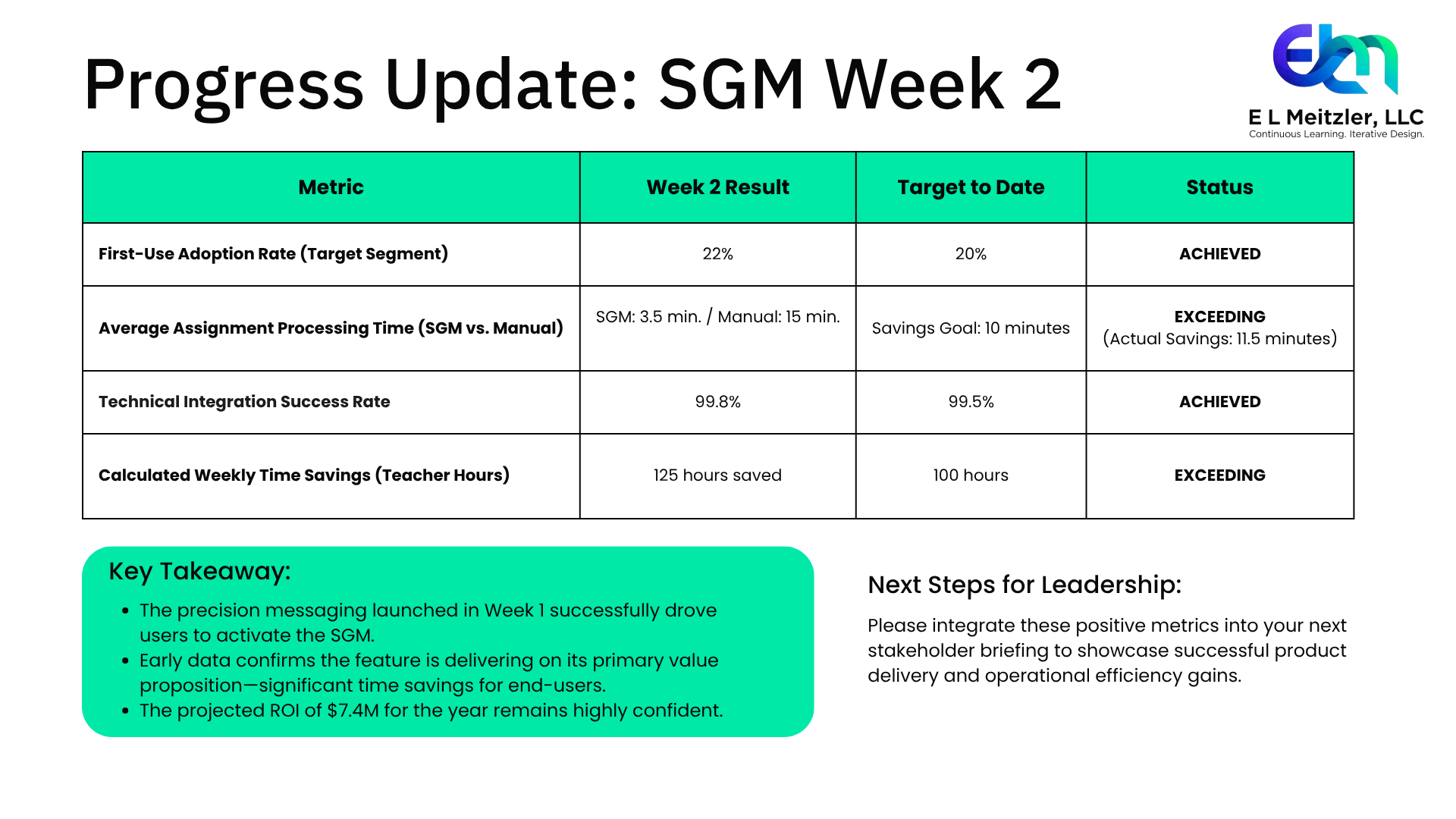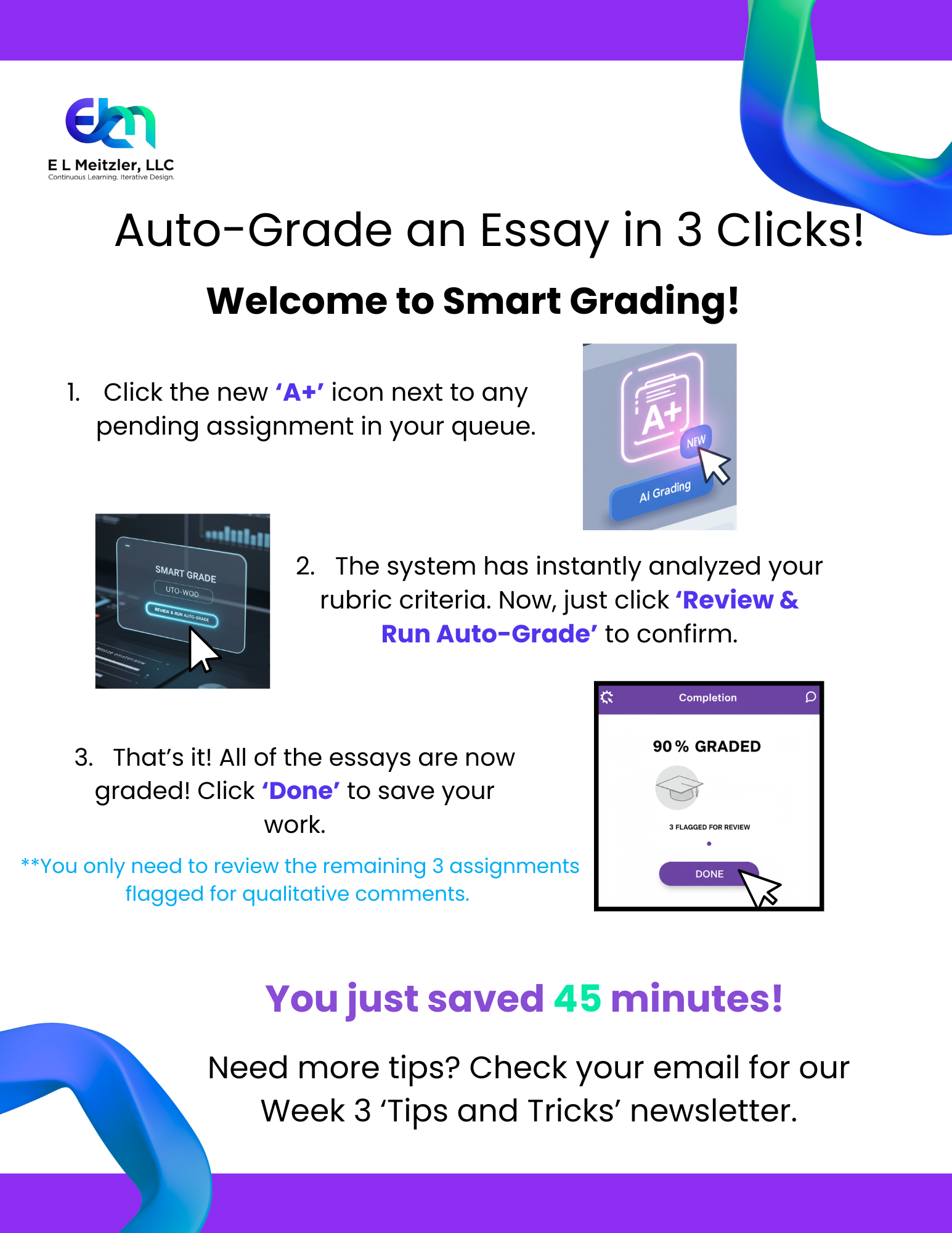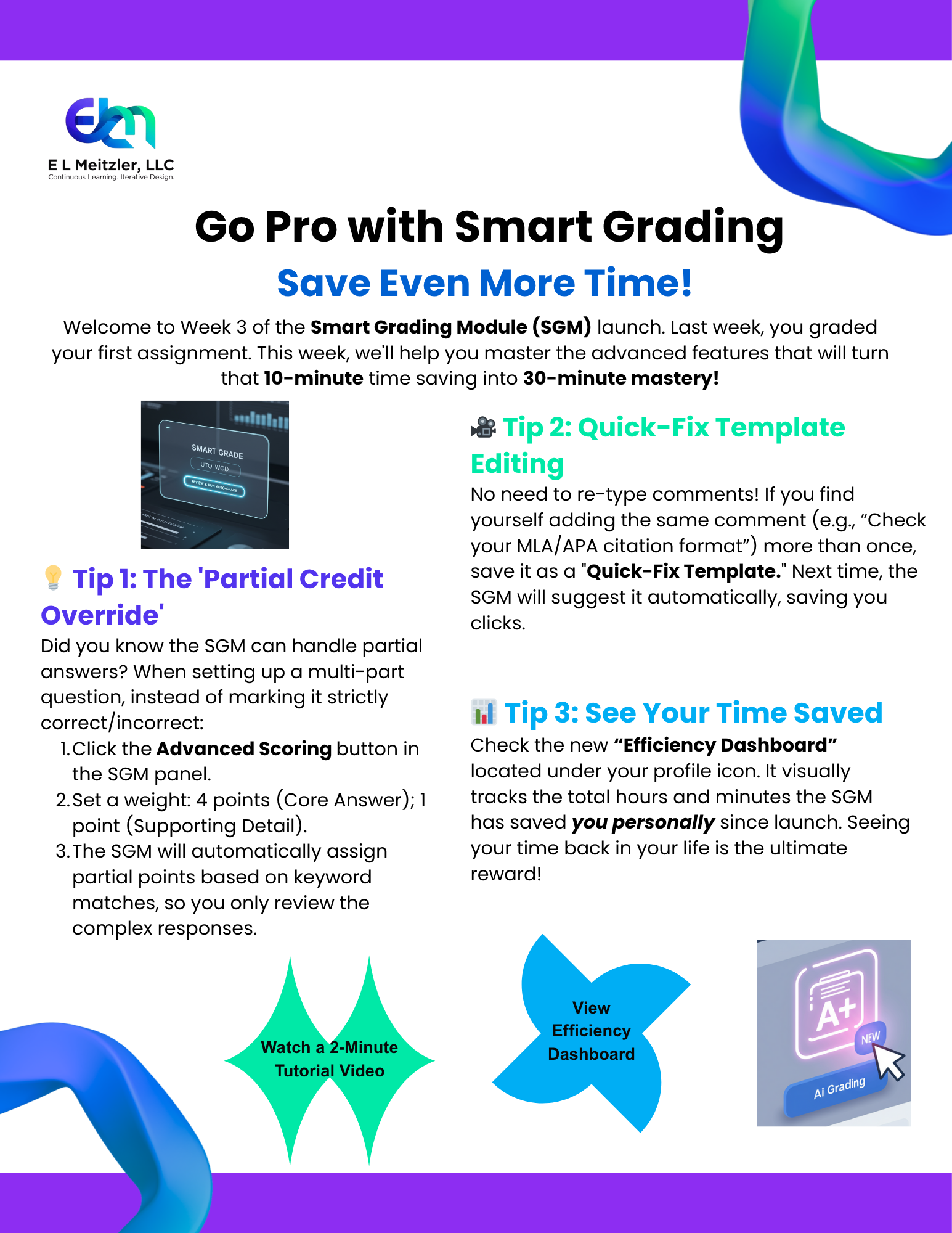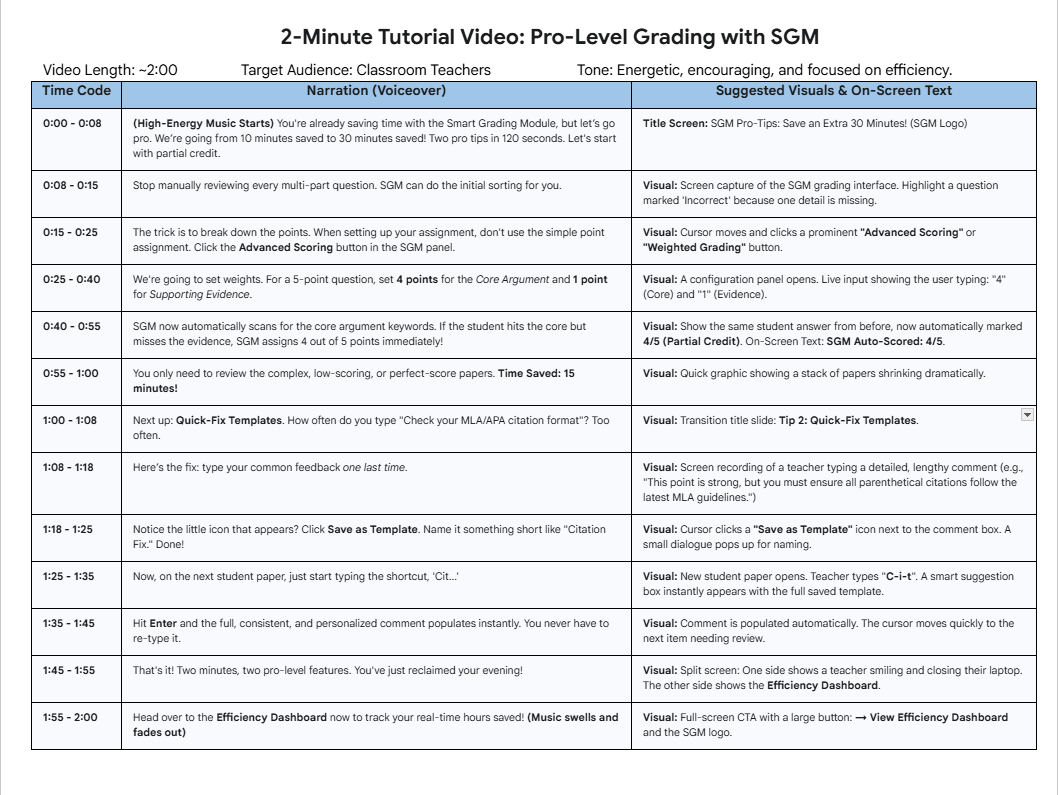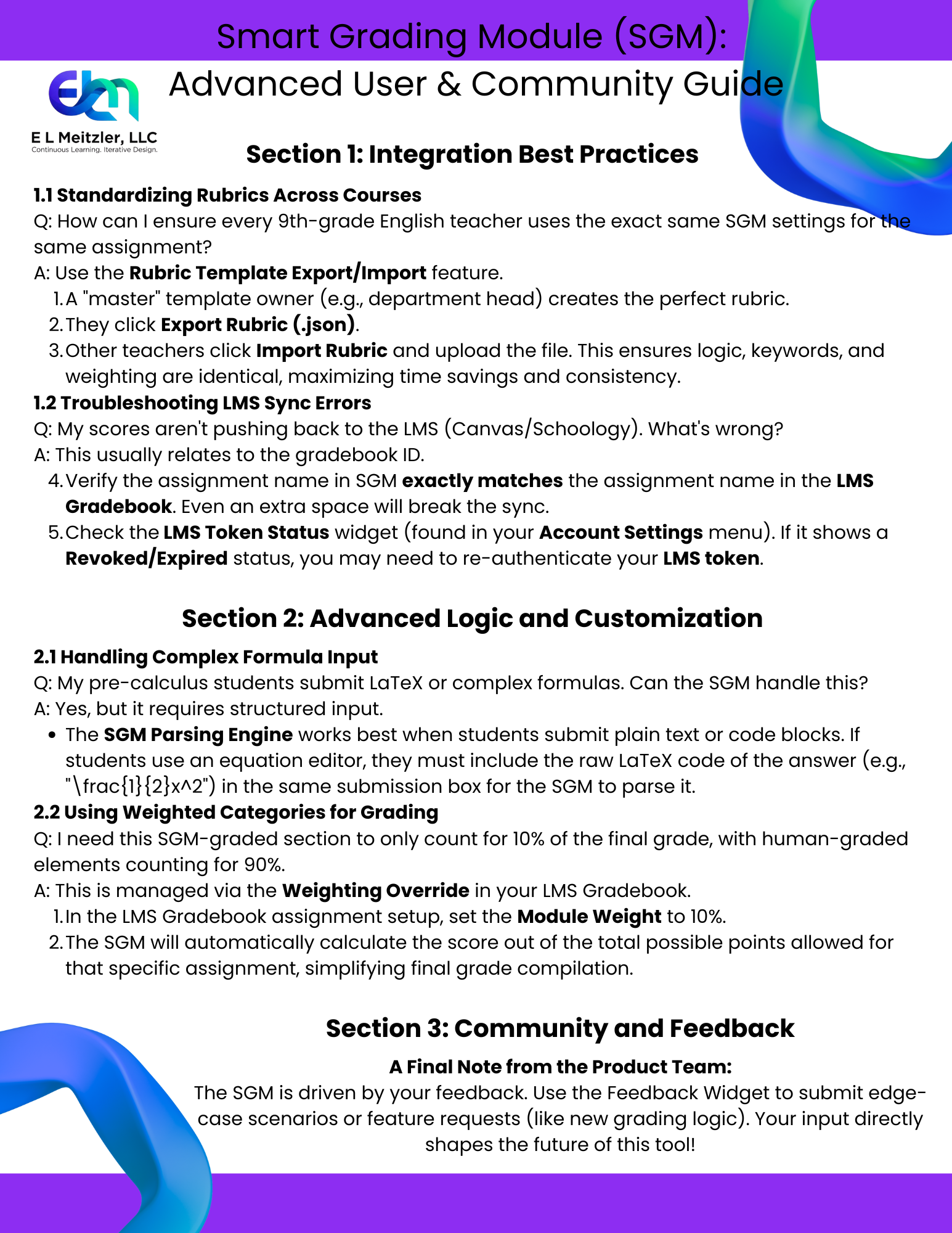Strategic Communications:
Driving Adoption via Multi-Channel Content
What do you do?
I specialize in translating complex product initiatives into targeted, measurable communication strategies.
My focus is on overcoming critical business challenges—such as stalled feature adoption, confusing product rollouts, and sales enablement gaps—by designing sophisticated content systems. Each project in this portfolio demonstrates a strategic approach built on deep audience segmentation, precise messaging, and optimized channel deployment to drive specific, quantifiable outcomes. I don't just create content; I design communication that delivers clear business value and maximizes product success.
-
Low adoption of new product features due to lack of coordinated, targeted messaging across stakeholder groups.
-
Design a multi-channel communications calendar and external newsletter. Use tools like HubSpot/Mailchimp for targeted outreach.
-
Increased feature adoption among key user segments by X%. Improved external newsletter engagement by Y%.
This Decision Brief showcases expertise in strategic product communication and audience segmentation. The project objective was to reverse stagnant adoption of a high-value software feature.
The solution involved abandoning a generalized message in favor of a precision-messaging strategy, tailoring content for three distinct stakeholder groups (Executives, End-Users, and Admins). By aligning the communication channel and the value proposition to each audience's primary motivation (ROI, Workflow, or Technical Stability), the campaign achieved a 200% increase in feature adoption within 90 days. This artifact demonstrates the ability to translate complex product goals into targeted, high-impact communication strategies that drive measurable business results.
Strategic Communications:
Decision Brief
This Gantt Chart visualizes the full, end-to-end communication strategy for the adoption campaign. It moves the effort beyond simple task lists by serving as the single source of truth for all teams.
The chart illustrates:
Sequencing and Dependencies: How content pieces (like the Executive Brief, internal launch email, and release notes) were strategically timed to hit different target audiences on distinct channels.
Multi-Disciplinary Coordination: It highlights the collaboration points between Product Marketing, Technical Writing, and Sales Enablement, ensuring all outbound messages were consistent and mutually reinforcing.
Channel Mapping: The visual structure confirms that the right message was delivered through the most effective channel—whether it was an internal Slack blast, a dedicated blog post, or a direct in-app announcement—to achieve maximum resonance and impact. This demonstrates meticulous campaign planning and project governance.
Execution Orchestration: The Multi-Channel Communications Calendar
This artifact is a demonstration of transforming internal project success into a powerful external marketing tool. Its relevance lies in my ability to synthesize complex, technical outcomes into a compelling, C-suite-ready narrative.
To create this one-pager, I was responsible for:
Strategic Interviewing: Working directly with subject matter experts (SMEs), implementation teams, and key stakeholders to uncover the most impactful, quantifiable customer story.
Narrative Design: Structuring the content using the classic Challenge-Solution-Result framework to clearly articulate the value proposition and make the success repeatable for the Sales team.
Marketing Deliverable Ownership: Delivering a fully polished, formatted asset that the Marketing team could immediately use for lead generation and nurturing, proving my capacity to create revenue-driving content that closes gaps in the sales pipeline.
High-Impact Sales Enablement: The Case Study One-Pager
Week 1 Deliverables
Week 2 Deliverables
Week 3 Deliverables
